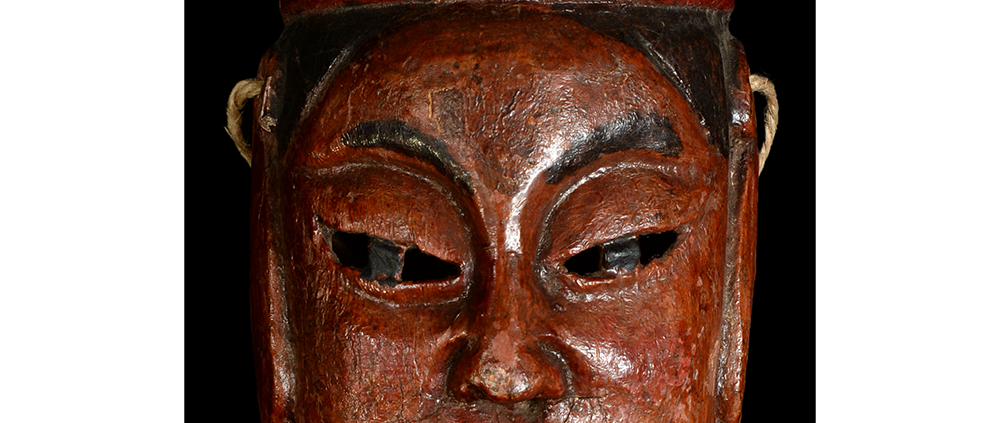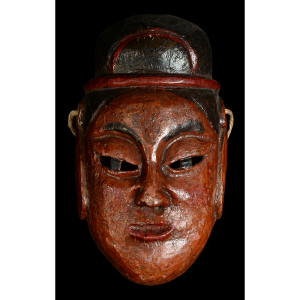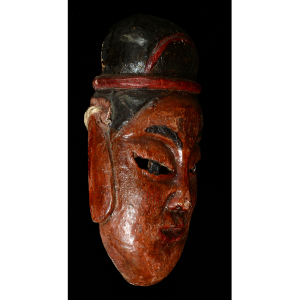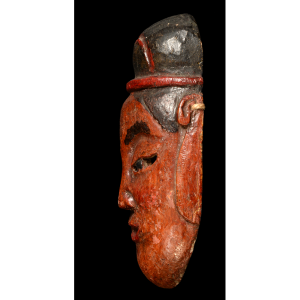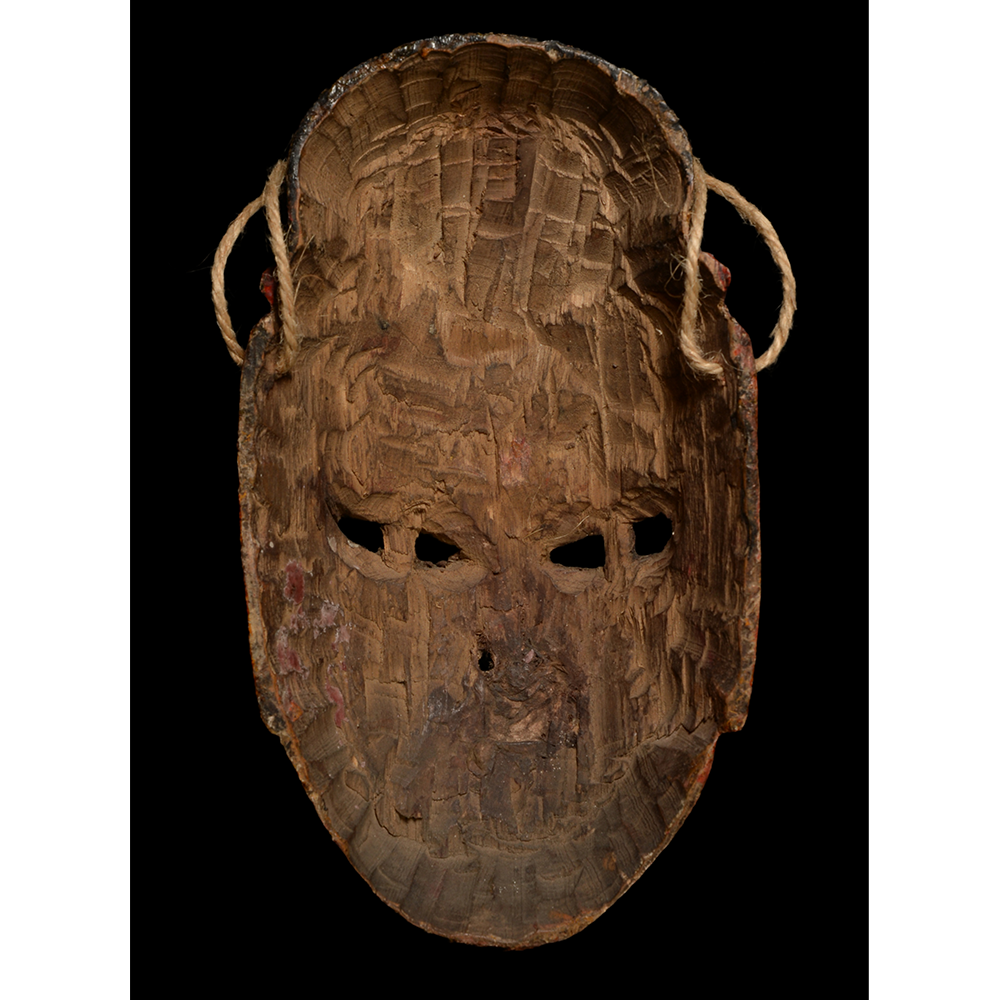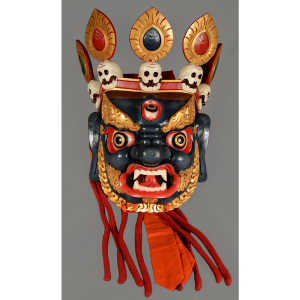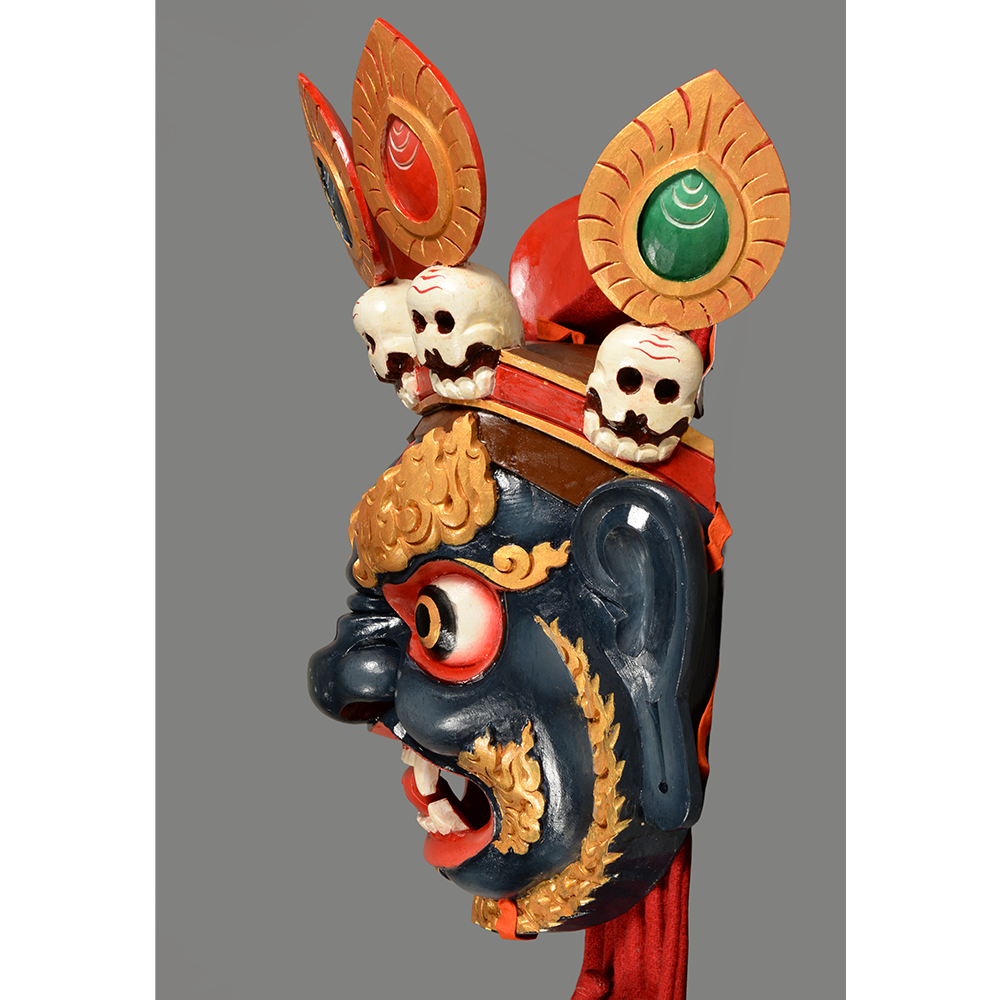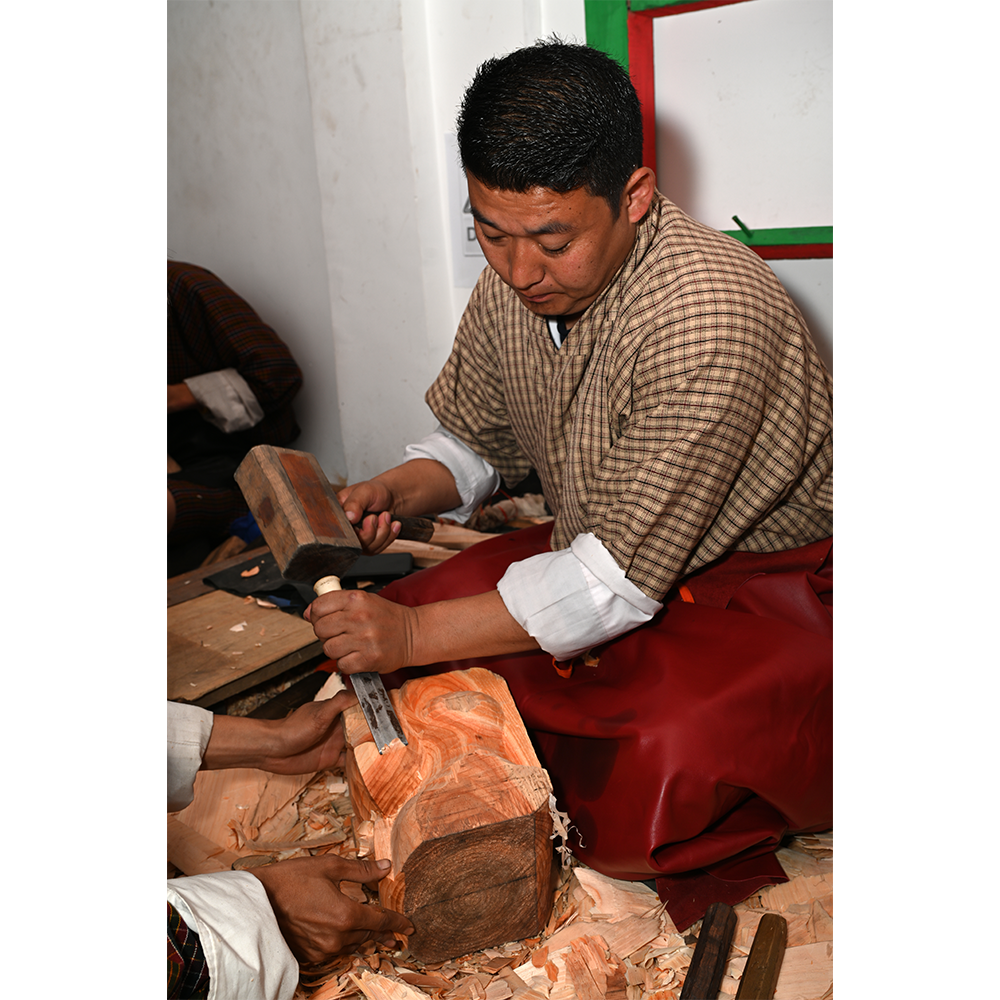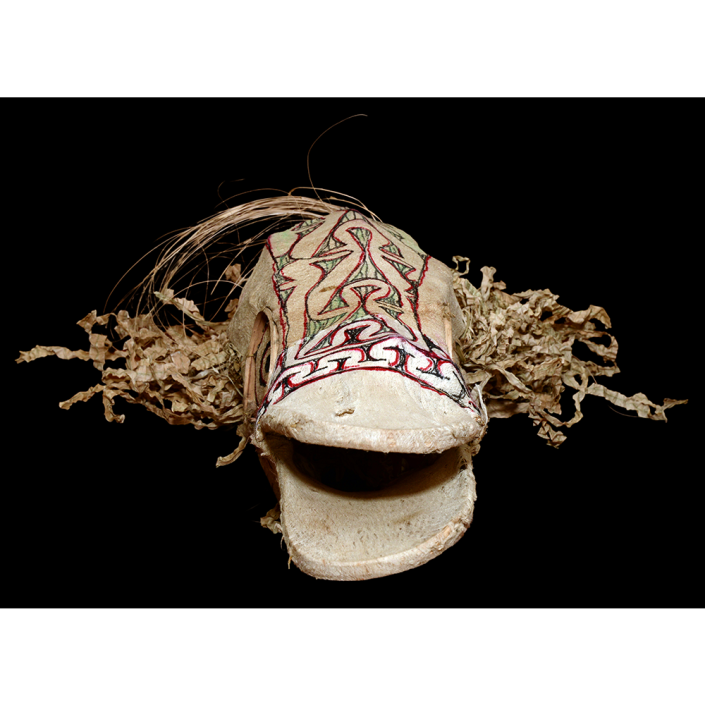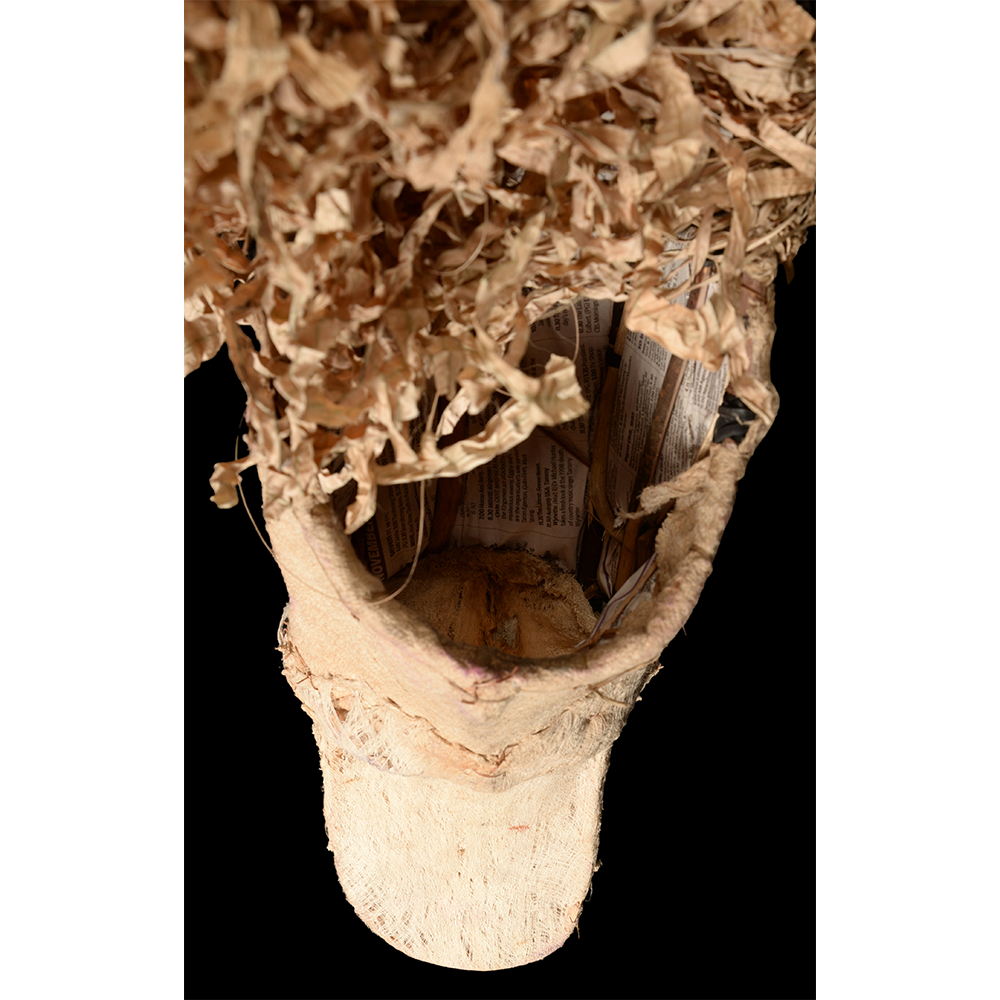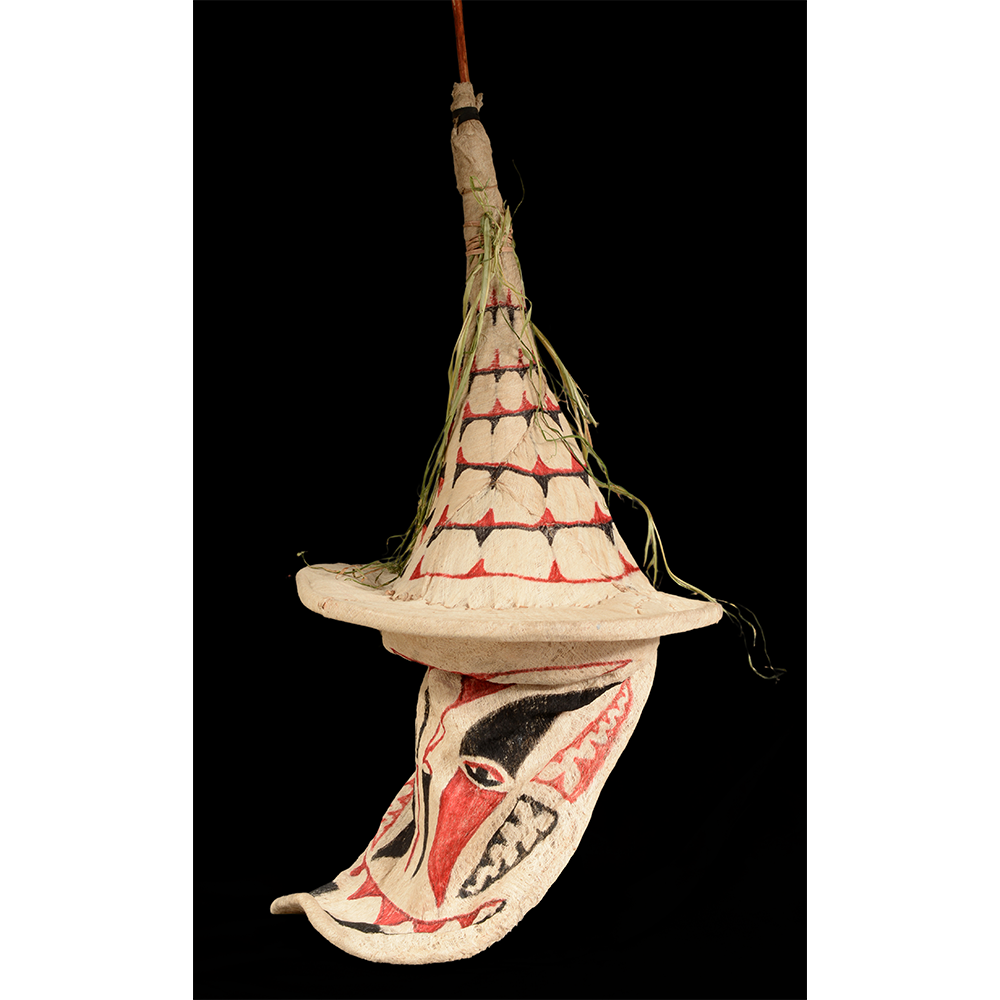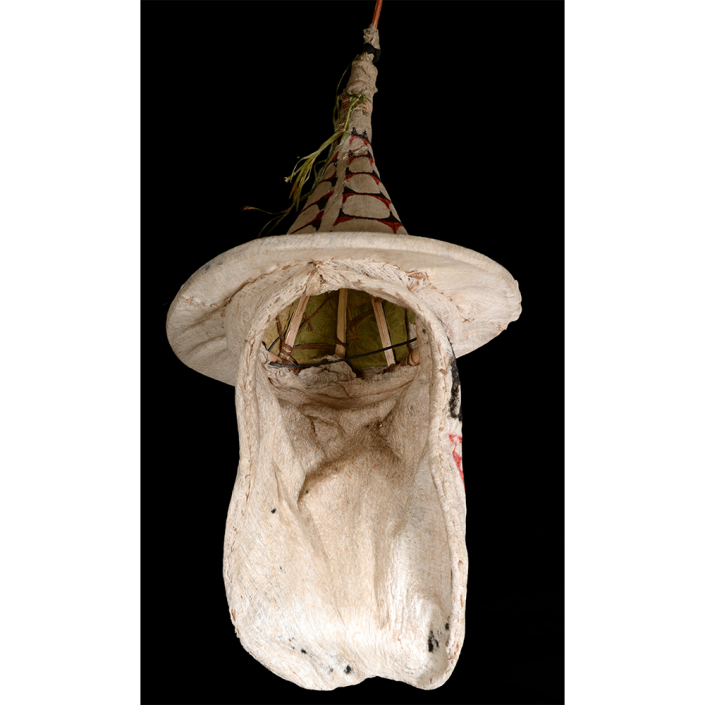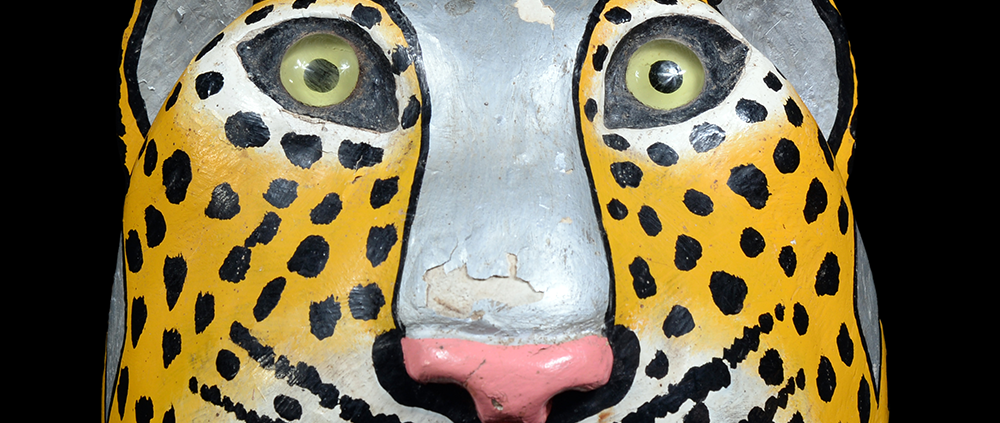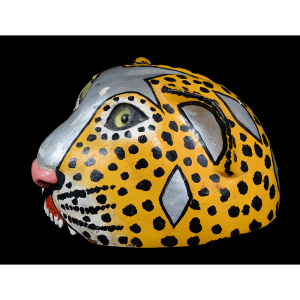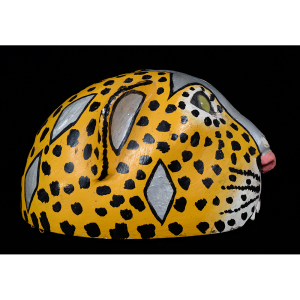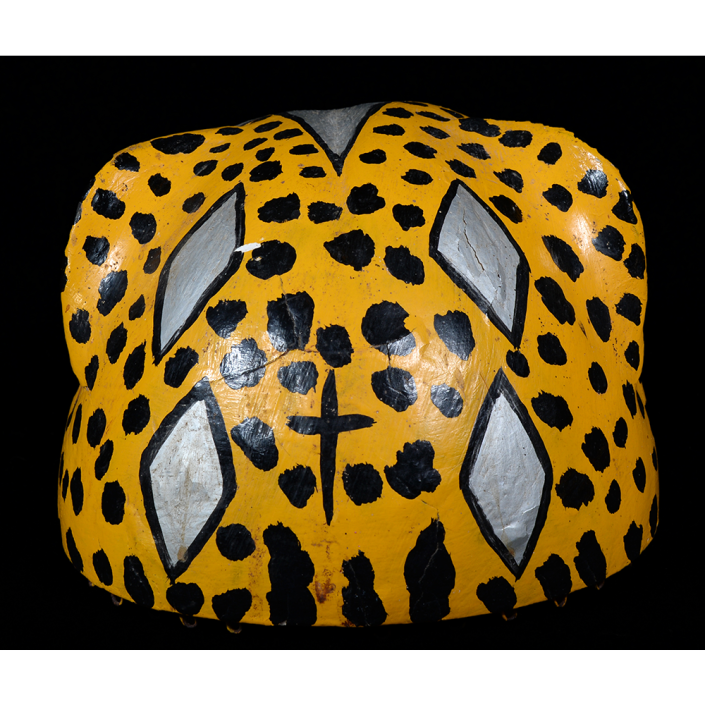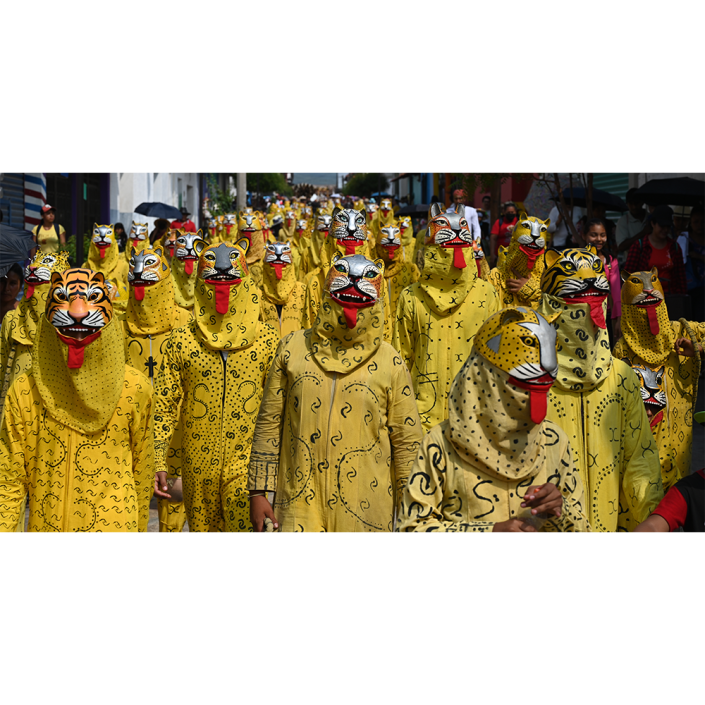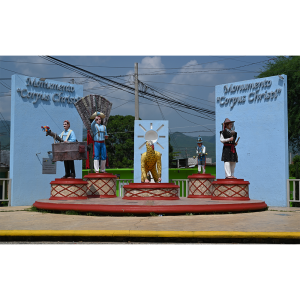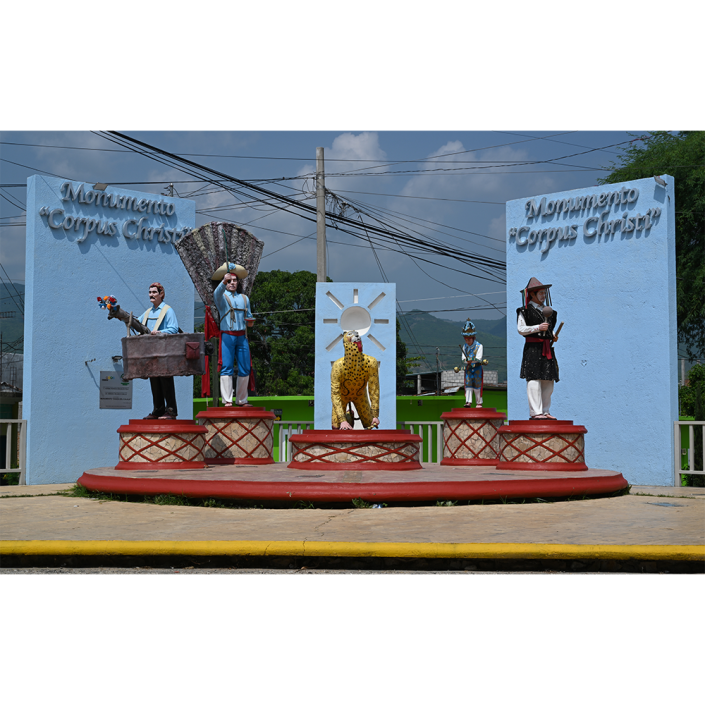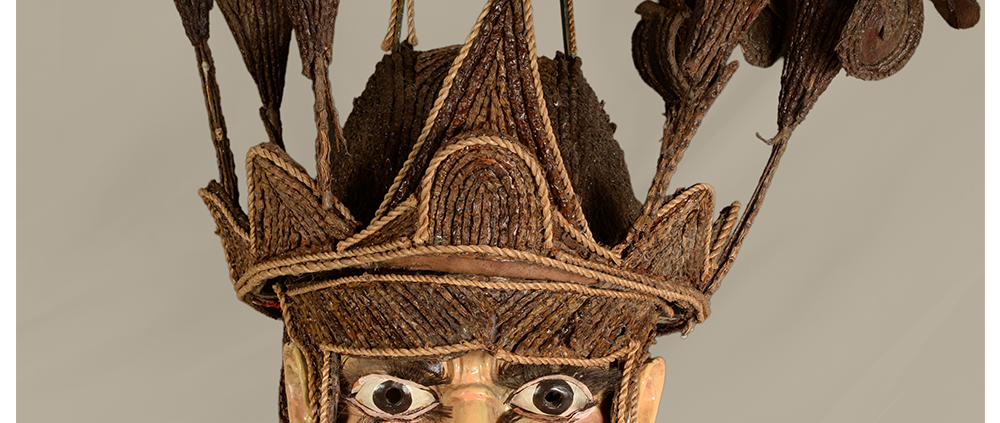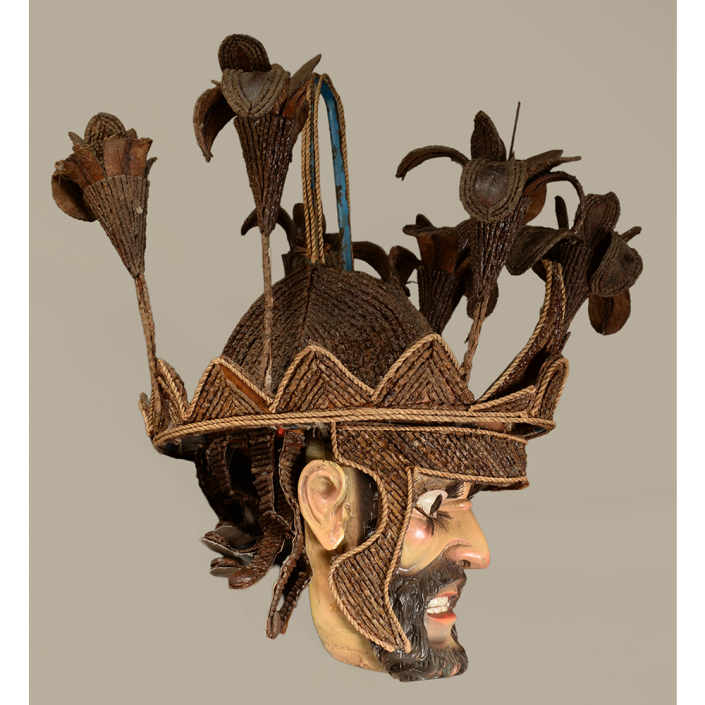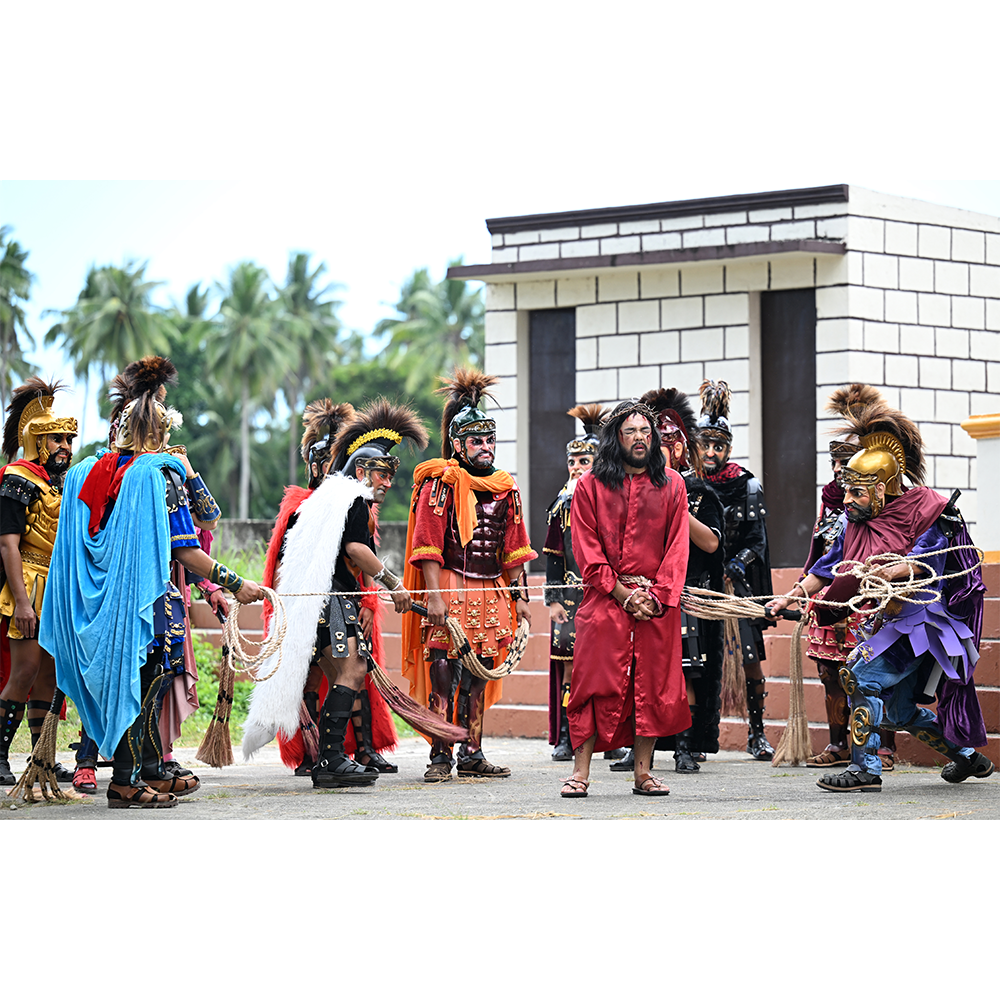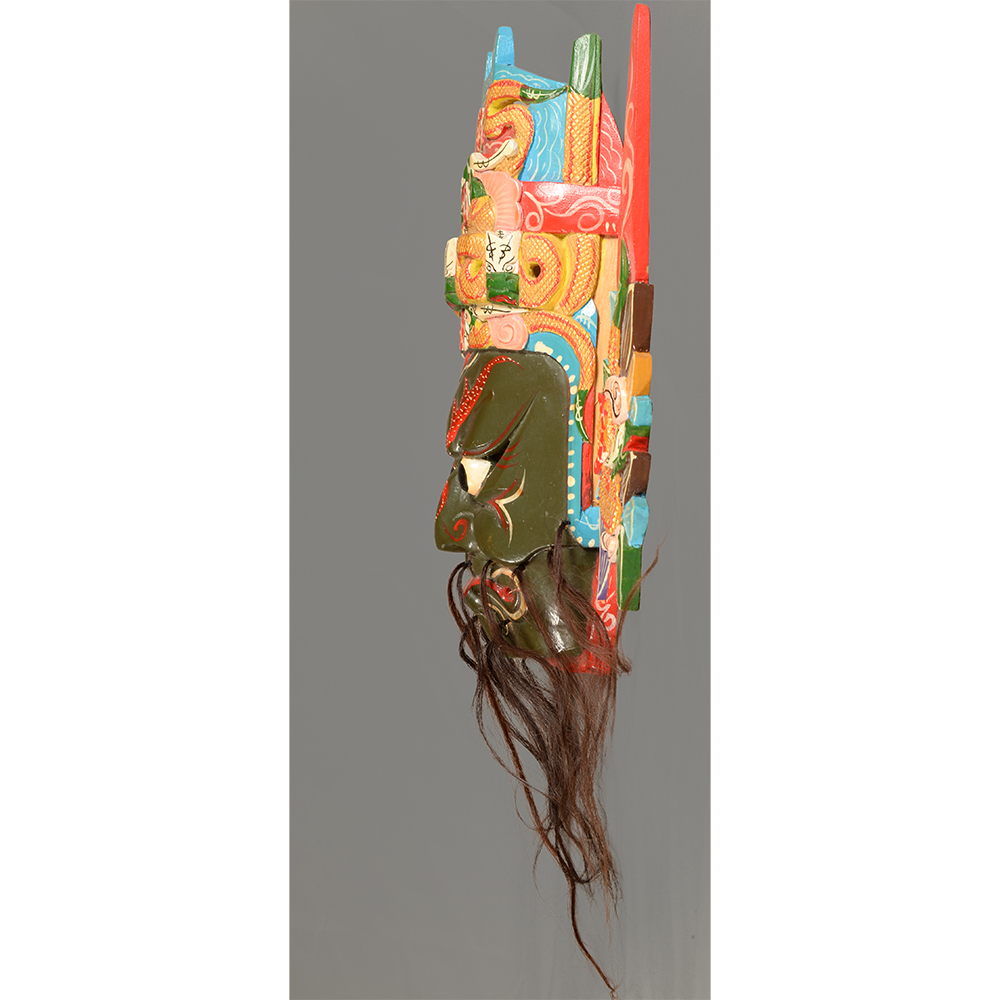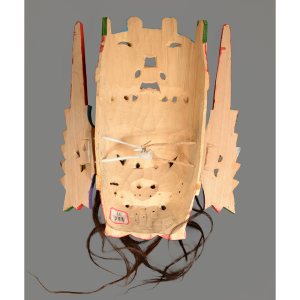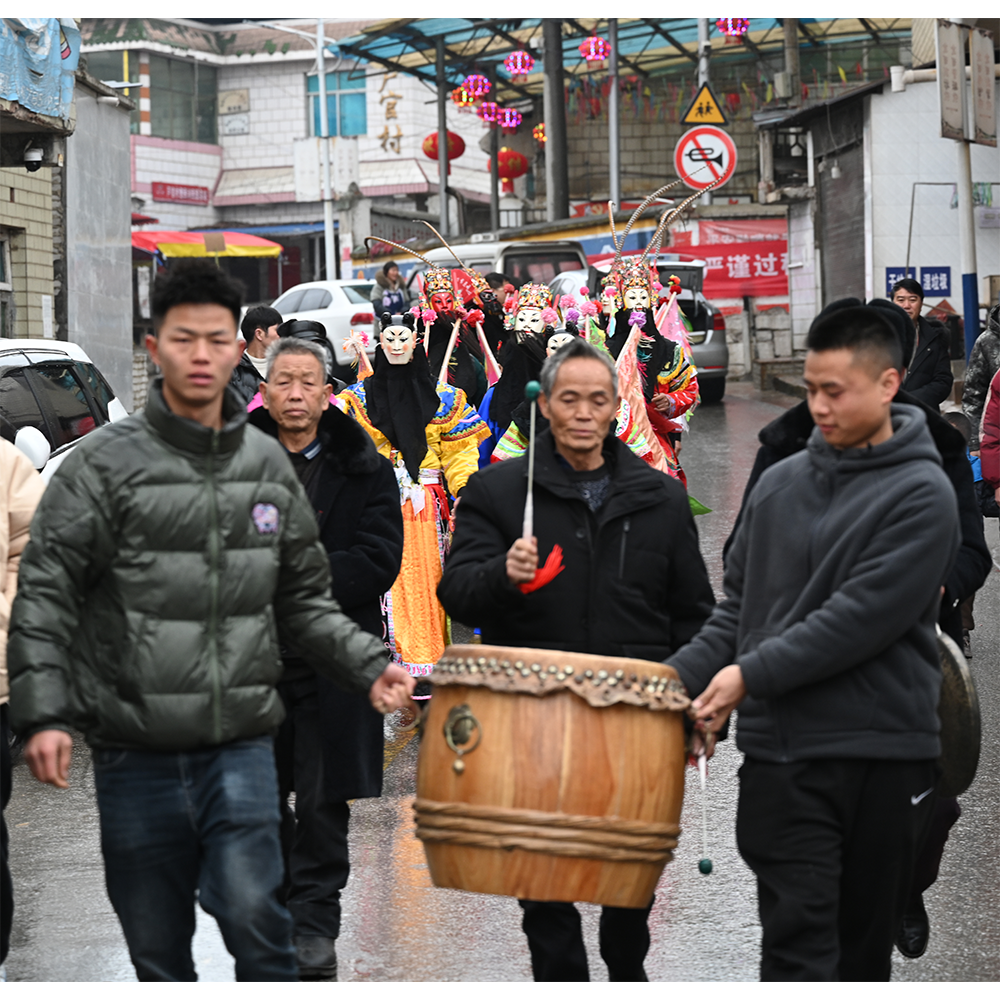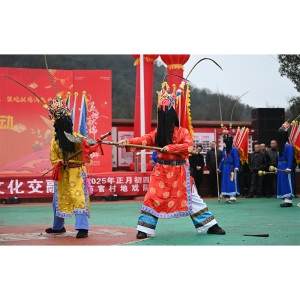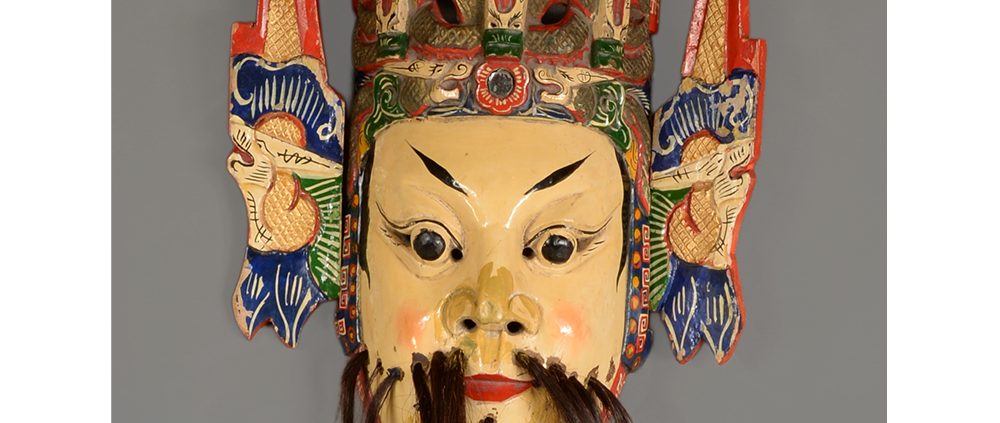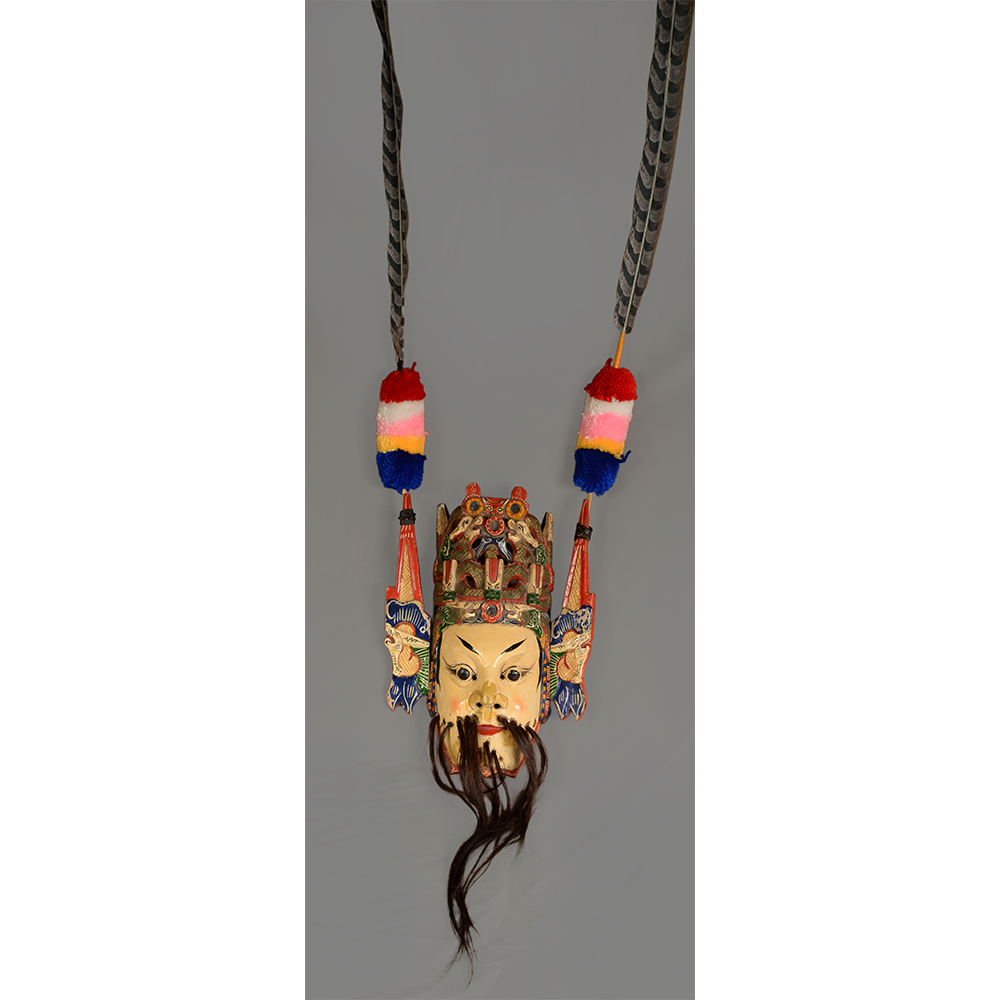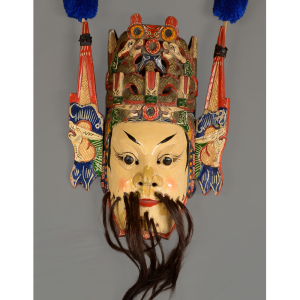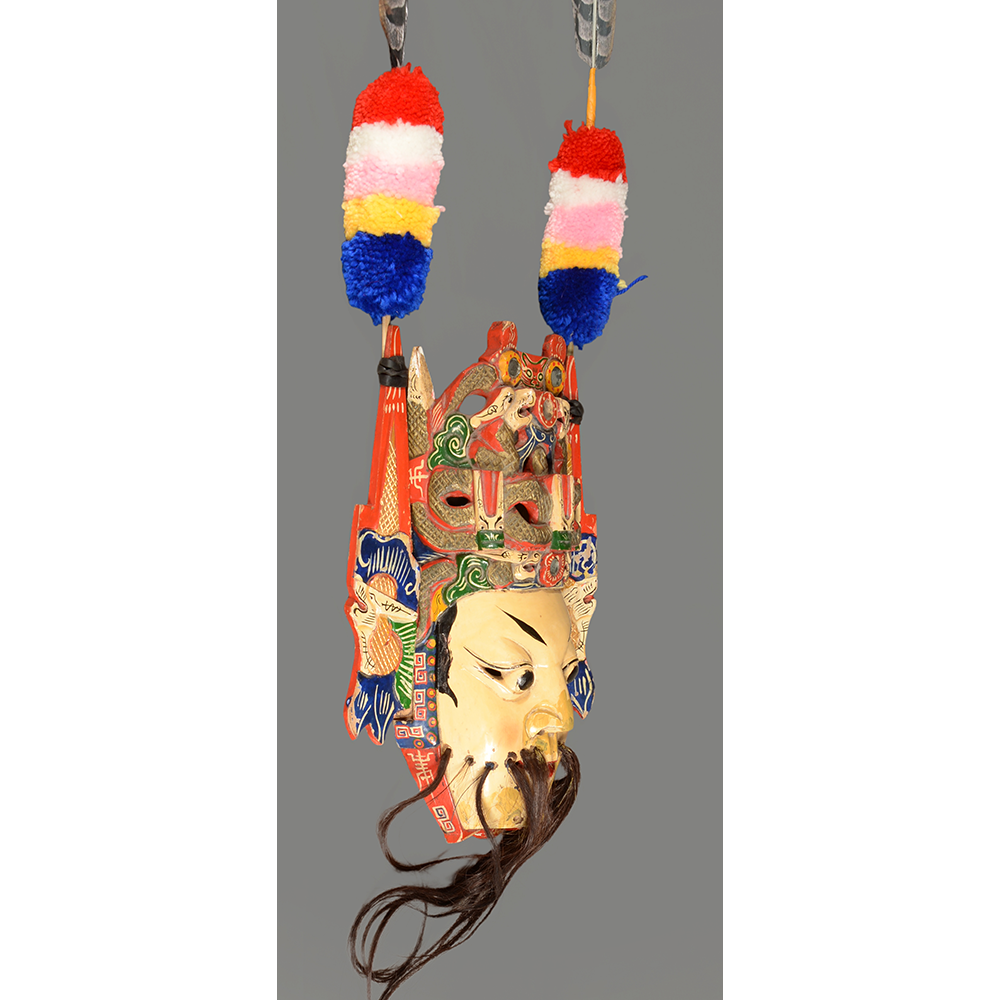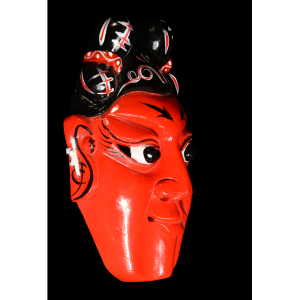TITLE: Percht Mask
TYPE: helmet mask
GENERAL REGION: Europe
COUNTRY: Austria
ETHNICITY: Alpine
DESCRIPTION: Schiachpercht (Ugly Percht) Mask
CATALOG ID: N/A
MAKER: N/A
CEREMONY: Perchtenlauf
FUNCTION: protection/purification; spirit invocation
AGE: N/A
MAIN MATERIAL: wood
OTHER MATERIALS: N/A
The tradition of Perchtenlauf celebrates a pagan Alpine goddess who ruled over winter in Austria, Bavaria, and parts of Switzerland and northern Italy. Perchta—also written Berchta—is a figure from Alpine folklore whose roots reach into pre-Christian Germanic traditions. She presides over the winter soltice, a liminal period when supernatural forces were thought to roam freely. Perchta’s defining feature is her dual nature. In her benevolent form, she appears as a radiant, beautiful woman who rewards hard work, domestic order, and proper observance of seasonal customs with gifts. In her darker aspect, she appears hideous and terrifying, and punishes laziness, disrespect, or taboo-breaking. Folklore often portrays this fearsome side with a long knife hidden in her skirts, allowing her to mete out grisly justice by opening the bellies of wrongdoers and stuffing them with straw—a vivid metaphor for moral emptiness.
This striking duality inspired the evolution of the Perchten—supernatural beings associated with Perchta—and ultimately the tradition of the Perchtenlauf, the “Perchten parade.” The two types of Perchten are the Schönperchten (“beautifuls”) and the Schiachperchten (“uglies”), which mirror Perchta’s contrasting faces. Beautiful Perchten bring blessings and good fortune, while their monstrous counterparts drive away evil influences and the symbolic darkness of winter. In the Perchtenlauf, the Perchten are divided into two groups that have symbolic battle, in which the harsh forces of winter are vanquished by the vitality of spring. Through loud processions and bell-ringing, Perchtenlauf still serves its ancient purpose—cleansing the community of misfortune and welcoming renewal for the coming year.
Although Perchten may have inspired the more recently developed concept of Krampus, they are separate concepts. Although both wear animal skins and furs, loud bells, and a whip, cane, or Rute, Krampus has a more human face with two horns. In contrast, the Perchten tend to have more chunky and abstract faces, six horns, and sometimes an articulated jaw that gnashes its teeth. Most importantly, Krampus is a demonic presence that punishes misbehaving children, while the Percht is both a symbol of and protector of the community. Krampus do not appear after Nicholaustage (December 6), whereas Perchten appear during the Rauhnächte, the twelve nights between Christmas and Epiphany (between December 26 and January 6). In some regions, however, the Perchent appear slightly early, such as mid-December.
The Museum collection currently has no Perchten masks.



